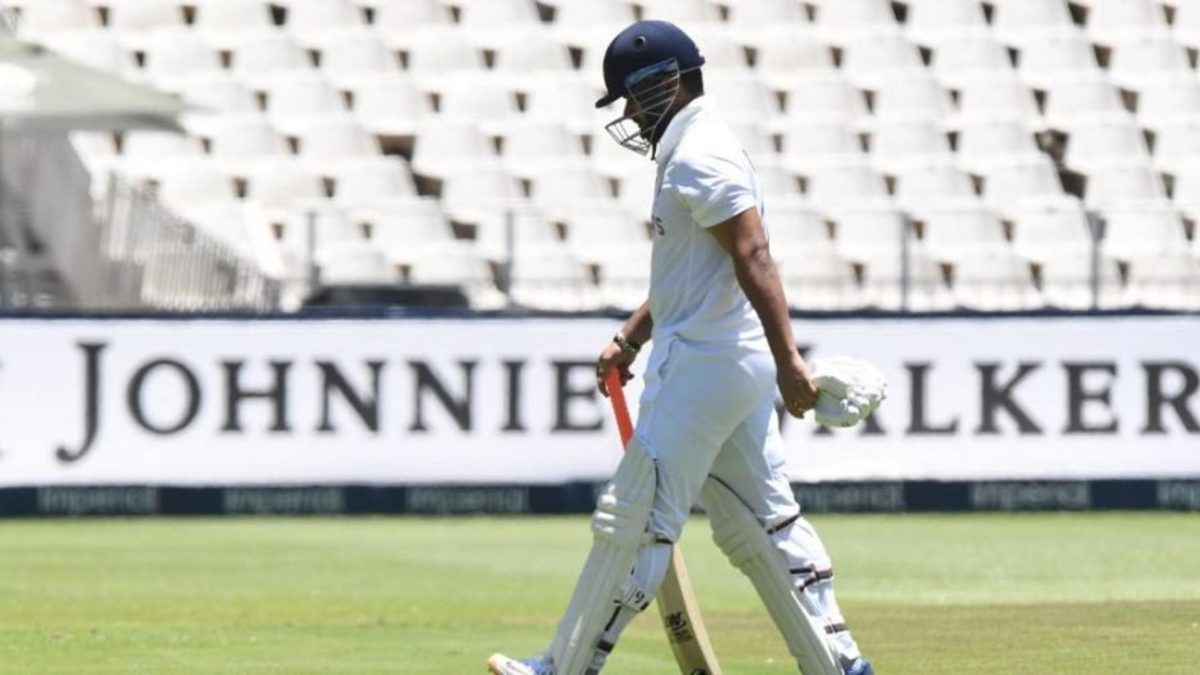
How Rishabh Pant’s Test career shapes up from hereon in could affect the futures of several of his ilk, writes Rohit Sankar.
The ugly and wild heave, the frozen stare from the head coach, the disappointed drop of the head. Rishabh Pant has seen all of it before. Too often. He was lambasted for it. More than once, he’s gone, “I just see the ball and react to it”.
After authoritatively reverse swatting Jimmy Anderson over the slip cordon in the Ahmedabad Test last year, Pant said, “When everything is going your way you can try your luck.”
In Johannesburg, that wasn’t quite true. Two balls into his innings, Pant stepped down the track to play an ugly hoick, the result of which we all know now.
As cliche as that line is, that’s how Pant works. The logic here, though, is that Pant could have probably played out Kagiso Rabada, who was at the end of his spell and pumped up from the dismissals of Cheteshwar Pujara and Ajinkya Rahane. But again, it’s not something even his worst detractors would bet against him pulling off. If you don’t appreciate him at his worst, you don’t deserve him at his best.
And we have seen Pant at his best. Quite a lot in 2021. There’s a touch of magic about it. But it’s striking that in a year in which he made a stunning 97 in Sydney, a breathtaking 89* at the Gabba, an audacious 91 in Chennai and his first Test hundred at home in Ahmedabad, Pant’s average did little moving. At the beginning of 2021, Pant was on 38.31. It shot up to 45.26 at one point, but the year ended with him averaging 38.80. It was arguably his greatest year in Test cricket. He played blinders, won India Test matches and hearts but, oddly enough, his record hasn’t changed all that much.
Since the end of the England series at home, across seven Tests, all abroad, Pant averages 19.23. He’s made one half-century in this period and that ended on exactly 50.
The question, then, is how many of these mesmerising knocks can he put together in a year? Because if he doesn’t, the manner of his dismissals, unlike someone like Rahane or Pujara, attract a lot of attention, especially when the middle order isn’t clicking as a whole.
He was probably fortunate to have pulled off four specials in 2021. In a year with a little less luck, that number could go down and, combined with his not-so-fancied heaves, it won’t take much for Pant to come under heavy scrutiny. It’s happened before, and will likely happen again.
This isn’t to say Pant shouldn’t be in the Test team. He is, without a shade of doubt, India’s best wicketkeeper batter. He’s an improved keeper, has shown he can adapt to different conditions with the bat and with the gloves, and played match-winning knocks that even some of the best can only dream of.
But there’s a bigger picture here. What is Pant the Test batter without those mind-blowing Gabba-like knocks? Would someone who offers a bit more consistency with the bat, and is probably a dream behind the stumps, without all the glam, add more value to the team? It seems a ridiculous question to ask now, after Pant’s glory year in Test cricket, but it isn’t a far-fetched thought considering how in his best year, his average didn’t go anywhere.
It’s a question that’ll likely haunt Test selectors a lot more in this era: whether to back the mercurial match-winner or the consistent team player. Ultimately, though, how much a team’s perspective, if not the entire Test cricket fraternity’s, changes could depend on the one or two individuals that are actually backed.
You could sit back and wonder if teams would have still picked a Quinton de Kock or a Brendon McCullum in Test cricket if Adam Gilchrist was a failure. Would David Warner or Shikhar Dhawan have been picked over more traditional openers if Virender Sehwag hadn’t quite cut it in Tests?
Of course, the transition from what’s traditionally accepted to what suits the modern game will eventually happen. But how quickly that happens might hinge on the rare few flaunting the skill now.
Pant’s impact, at least post-Gabba, is way more positive than negative at this stage, but with someone like him, it’s easy for that to go down the drain with two more heedless swats like the one at Wanderers. If that happens, what would it mean for someone like him trying to cut it into Test cricket? The thought process around the very kind of players might change based on one player’s success or failure.
“We know Rishabh plays positively and he plays in a particular manner and that has got him a little bit of success,” Rahul Dravid said at the post-match press conference in Johannesburg. “But yeah, of course, there are times when we’re going to have some level of conversations with him around, just a little bit of maybe just selection of the time to play that [shot].”
It’s probably down to Pant to take one of two routes. To accept that those wonder-knocks happen very rarely is one way. He’d then probably need to put a leash on his aggression or time it better, as Dravid put it, especially with teams having figured out how to draw him into the big shot from over the wicket. The second is to brave common notions and stick to what he thinks works best for him. Whichever way he chooses, it could shape not only his future, but many of his kind.








